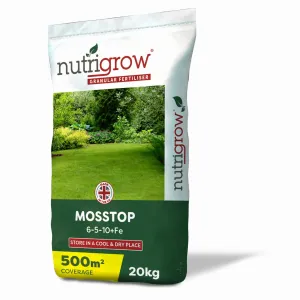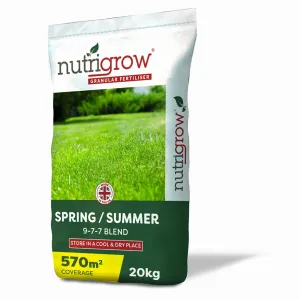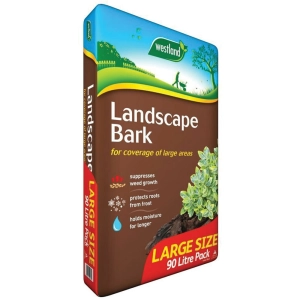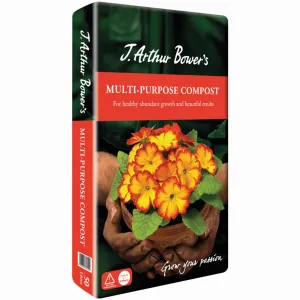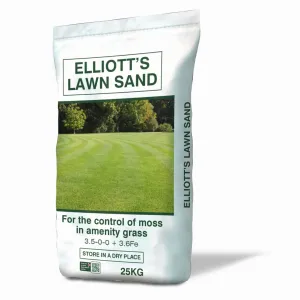In the UK, our winters can swing between being mild enough to step out without a coat to deep freezes with a foot of snow. With this increasingly unpredictable climate and our shifting seasons, it can be tricky to define the winter period.
For this reason - and due to variations from one end of the country to another - when it comes to fertiliser, it is helpful to think about the temperature and general weather conditions, rather than fixating on the season.
Let’s start by looking at lawn and grassland fertiliser in colder weather.
Fertilising lawn grass in low temperatures
There are a range of autumn/winter fertilisers that can be used to help protect your grass during the coldest weather.
However, there is no official date or specific temperature that marks a cut off for fertiliser application on grass.
Instead, there are a range of variables that can influence whether you should, or should not, apply fertiliser to grass in cooler months. Here they are:
Frost and ice
If the ground is frozen, applying fertiliser can do more harm than good. This is because it will not be able to move easily through frozen soil to the grass roots.
Ollie Wright, Agrigem’s Technical Account Manager in charge of Turf Growers explains: “When the ground is frozen solid, fertiliser can run off or remain locked up in the soil preventing the grass from accessing and benefitting from the fertiliser.
“Aim to fertilise lawns before the ground is forecast to freeze. Towards the end of autumn or when the wetter weather has started - from mid-September onwards is ideal.”
Soil type
Sandy soil is likely to warm up a little faster than clay soil which may mean you can apply fertiliser a little sooner (once soil has defrosted) if you benefit from a lighter sandier soil.
If you were wondering when to apply lawn sand, it can be applied at any time from February-November providing it is free from frost and drought (though is usually used in spring months). As well as controlling moss, lawn sand is also widely used to harden grass against disease and green up grass for a quick fix.
The presense of iron sulphate in lawn sand can help reduce the pH level of the soil which can in turn reduce the amount of worm casts.
Most autumn / winter fertilisers contain lower amounts of nitrogen and relative higher amounts of potassium and phosphate. This helps to strengthen roots and prevent excessive leaf growth – which you want to avoid because new growth is likely to be susceptible to, and damaged by frost.
Sandier soils tend to be slightly lower in nutrients, so will greatly benefit from an application of autumn/winter fertiliser.
Release speed or release profile
You can buy conventional or slow-release fertilisers. Conventional-release fertilisers are designed to dissolve quickly making the nutrients available quickly, whereas a slow-release fertiliser will only release smaller amounts of nutrients but over a longer period.
Considering that we do not want to encourage excessive top growth in winter (due to that risk of frost damage) you might want to consider a slow-release fertiliser for your lawn in winter.
You may come across the term ‘coated nitrogen’. It is this coating that prevents all the nutrient becoming immediately available; ensuring it breaks down and is delivered over a longer period.
Paddocks, pasture and grazing grass
The same variables that apply to lawn fertilising also apply to paddocks and pasture. It is generally accepted that autumn months are the best when it comes to paddock fertiliser application.
Applying fertiliser in autumn will encourage growth and protect grass from stress over winter.
However, to keep grassland in top condition, paddock managers also need to keep poaching to a minimum, watch drainage, and ensure dung is collected.
Adding nutrition to soil in winter
If you’re a keen vegetable gardener, you are likely to be aware of the benefits of growing cover crops over winter to add valuable organic matter ready for spring planting.
Or, you may be used to adding mulch, compost, leaf mould, or manure to help improve your soil.
These activities are usually enough to boost soil quality in the colder months, ensuring you don’t leave bare beds.
If you add fertiliser to bare soil over winter, it may run off, wasting its effectiveness and your money.
It is better to hold off until the temperatures climb a little before helping early growth with a spring fertiliser.
Fertilising trees and shrubs in low temperatures
It is unlikely that you will need to fertilise plants, trees or shrubs in winter. The roots of most plants will be dormant during this period and will not need or benefit from fertiliser – even those that flower in winter.
Adding fertiliser in cold weather can force green growth in milder weather, which can suffer if the temperature drops again, so it is best avoided until the weather and soil temperatures start to warm up.
However, mulch can be applied over the winter around the base of plants in beds and in pots – to help protect them from the worse effects of the cold weather.
In summary, apply fertiliser to lawns before frost is due or temperatures drop low enough to freeze the ground. Consider a slow-release fertiliser for lawns in winter.
Cover bare earth with a mulch or plant a cover crop once temperatures fall to help improve soil quality over winter.
Related reading:




